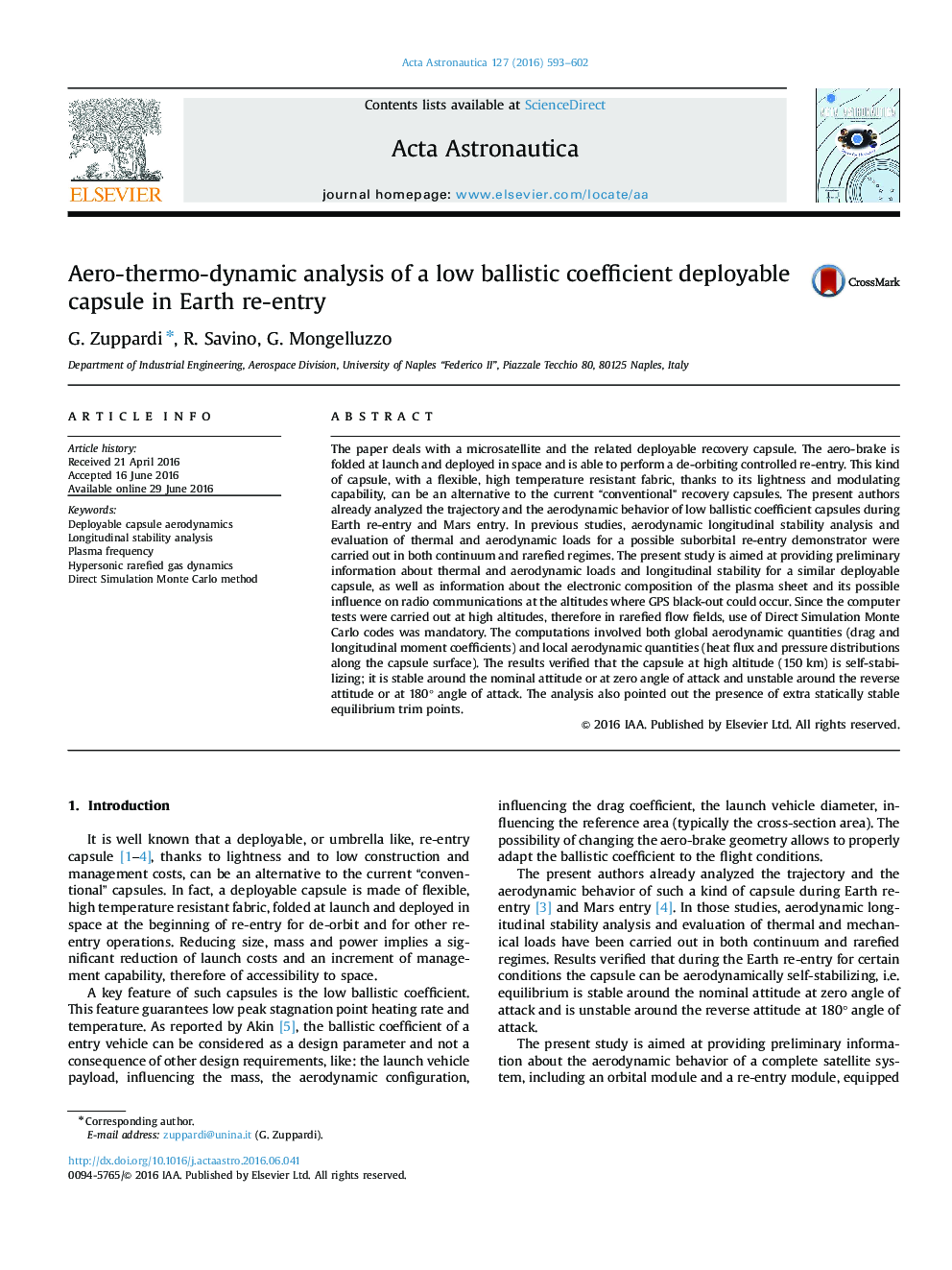| کد مقاله | کد نشریه | سال انتشار | مقاله انگلیسی | نسخه تمام متن |
|---|---|---|---|---|
| 8056118 | 1519927 | 2016 | 10 صفحه PDF | دانلود رایگان |
عنوان انگلیسی مقاله ISI
Aero-thermo-dynamic analysis of a low ballistic coefficient deployable capsule in Earth re-entry
ترجمه فارسی عنوان
تجزیه و تحلیل هوای گرم دینامیکی ضریب بالستیک کم کپسول قابل استفاده در ورود مجدد زمین
دانلود مقاله + سفارش ترجمه
دانلود مقاله ISI انگلیسی
رایگان برای ایرانیان
کلمات کلیدی
آیرودینامیک کپسول قابل انبار، تجزیه و تحلیل ثبات طولی، فرکانس پلاسما، پویایی گاز مایع منفرد، روش شبیه سازی مستقیم مونت کارلو،
موضوعات مرتبط
مهندسی و علوم پایه
سایر رشته های مهندسی
مهندسی هوافضا
چکیده انگلیسی
The paper deals with a microsatellite and the related deployable recovery capsule. The aero-brake is folded at launch and deployed in space and is able to perform a de-orbiting controlled re-entry. This kind of capsule, with a flexible, high temperature resistant fabric, thanks to its lightness and modulating capability, can be an alternative to the current “conventional” recovery capsules. The present authors already analyzed the trajectory and the aerodynamic behavior of low ballistic coefficient capsules during Earth re-entry and Mars entry. In previous studies, aerodynamic longitudinal stability analysis and evaluation of thermal and aerodynamic loads for a possible suborbital re-entry demonstrator were carried out in both continuum and rarefied regimes. The present study is aimed at providing preliminary information about thermal and aerodynamic loads and longitudinal stability for a similar deployable capsule, as well as information about the electronic composition of the plasma sheet and its possible influence on radio communications at the altitudes where GPS black-out could occur. Since the computer tests were carried out at high altitudes, therefore in rarefied flow fields, use of Direct Simulation Monte Carlo codes was mandatory. The computations involved both global aerodynamic quantities (drag and longitudinal moment coefficients) and local aerodynamic quantities (heat flux and pressure distributions along the capsule surface). The results verified that the capsule at high altitude (150 km) is self-stabilizing; it is stable around the nominal attitude or at zero angle of attack and unstable around the reverse attitude or at 180° angle of attack. The analysis also pointed out the presence of extra statically stable equilibrium trim points.
ناشر
Database: Elsevier - ScienceDirect (ساینس دایرکت)
Journal: Acta Astronautica - Volume 127, OctoberâNovember 2016, Pages 593-602
Journal: Acta Astronautica - Volume 127, OctoberâNovember 2016, Pages 593-602
نویسندگان
G. Zuppardi, R. Savino, G. Mongelluzzo,
